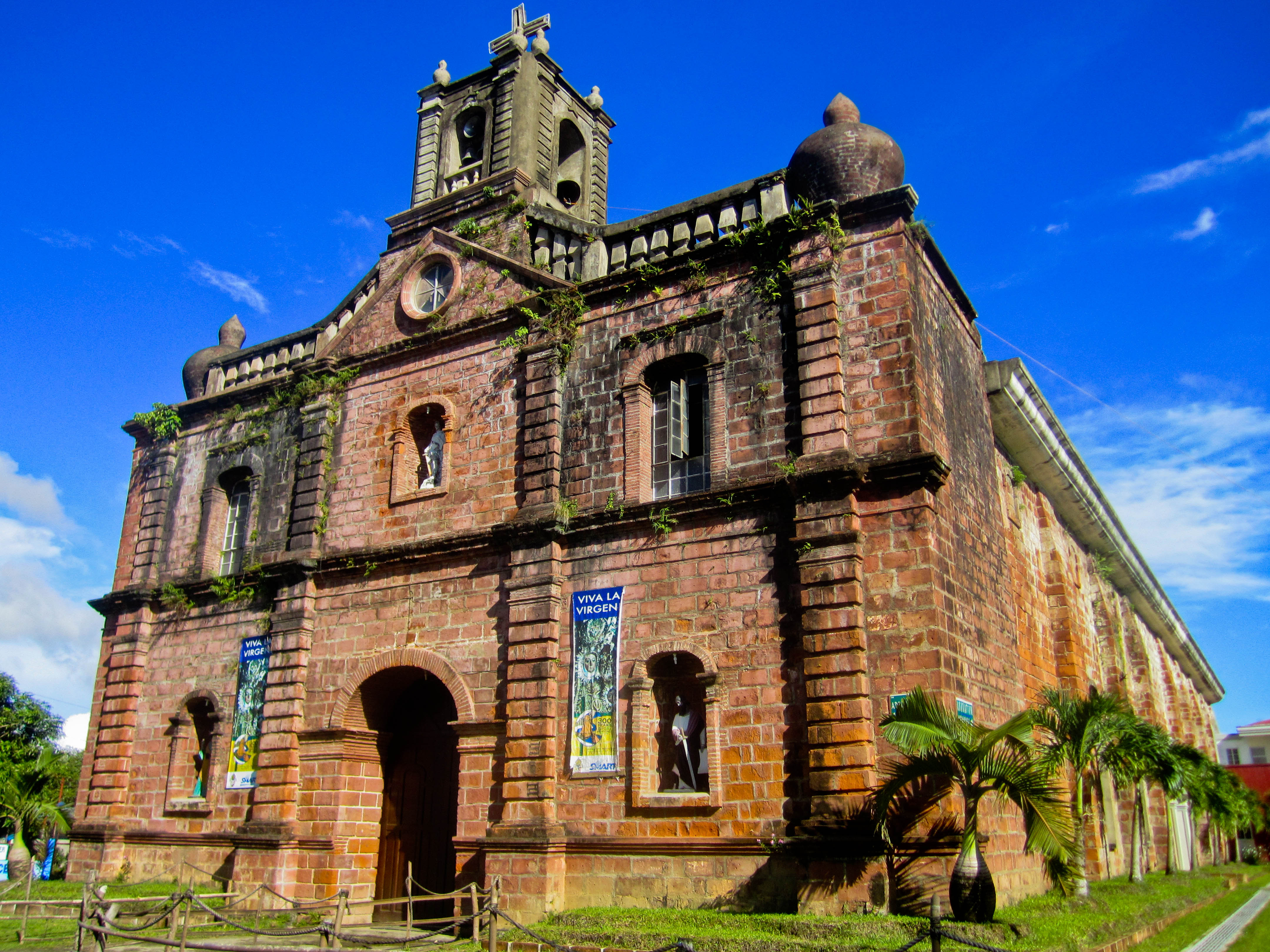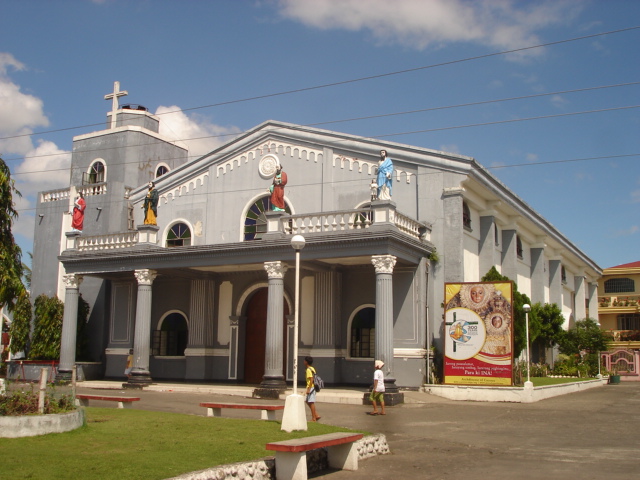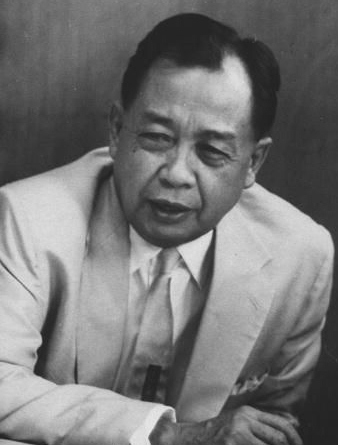|
Camarines Sur's 2nd Congressional District
Camarines Sur's 2nd congressional district is one of the five congressional districts of the Philippines in the province of Camarines Sur. It has been represented in the House of Representatives of the Philippines since 1919. The district consists of the west central Camarines Sur municipalities of Gainza, Libmanan, Milaor, Minalabac, Pamplona, Pasacao and San Fernando. It is currently represented in the 18th Congress by Luis Raymund Villafuerte of the National Unity Party (NUP). Representation history Election results 2022 2019 2016 2013 2010 See also *Legislative districts of Camarines Sur The legislative districts of Camarines Sur are the representations of the province of Camarines Sur and the independent city of Naga in the various national legislatures of the Philippines. The province and the city are currently represented in ... References {{coord missing, Philippines Congressional districts of the Philippines Politics ... [...More Info...] [...Related Items...] OR: [Wikipedia] [Google] [Baidu] |
House Of Representatives Of The Philippines
The House of Representatives of the Philippines ( fil, Kapulungan ng mga Kinatawan ng Pilipinas, italic=unset, ''Kamara'' or ''Kamara de Representantes'' from the Spanish language, Spanish word ''cámara'', meaning "chamber") is the lower house of Congress of the Philippines, Congress, the bicameral legislature of the Philippines, with the Senate of the Philippines as the upper house. The lower house is usually called Congress, although the term collectively refers to both houses. Members of the House are officially styled as ''representative'' (''kinatawan'') and sometimes informally called ''congressmen'' or ''congresswomen'' (''mga kongresista'') and are elected to a three-year term. They can be re-elected, but cannot serve more than three consecutive terms except with an interruption of one term like the senate. Around eighty percent of congressmen are district representatives, representing a particular geographical area. The 19th Congress has 253 Congressional districts of ... [...More Info...] [...Related Items...] OR: [Wikipedia] [Google] [Baidu] |
18th Congress Of The Philippines
The 18th Congress of the Philippines ( fil, Ikalabingwalong Kongreso ng Pilipinas), composed of the Philippine Senate and House of Representatives of the Philippines, House of Representatives, met from July 22, 2019, until June 1, 2022, during the last three years of Rodrigo Duterte's presidency. The convening of the 18th Congress of the Philippines, Congress followed the 2019 Philippine general election, 2019 general elections, which replaced half of the Senate membership and the entire membership of the House of Representatives. Leadership Senate *President of the Senate of the Philippines, Senate President: **Tito Sotto (Nationalist People's Coalition, NPC), July 22, 2019 – June 30, 2022 *President pro tempore of the Senate of the Philippines, Senate President ''pro tempore'': **Ralph Recto (Nacionalista Party, Nacionalista), July 22, 2019 – June 30, 2022 *Majority Floor Leader of the Senate of the Philippines, Majority Floor Leader: **Juan Miguel Zubiri (Independent po ... [...More Info...] [...Related Items...] OR: [Wikipedia] [Google] [Baidu] |
Nabua, Camarines Sur
Nabua, officially the Municipality of Nabua (Rinconada Bikol: ''Banwāan ka Nabua''; Tagalog: ''Bayan ng Nabua''), is a 1st class municipality in the province of Camarines Sur, Philippines. According to the 2020 census, it has a population of 86,490 people. Nabua is the mother town of Iriga City, Buhi, Bato, Balatan, Bula and Baao in Camarines Sur. Nabua has five districts: Antacudos, Binoyoan, Caobnan, Lupa and Sabang. Nabua is home of the modern kuntaw, and jota rojana. Past Mayors Atty. Fernando "Fer" Simbulan , 2007-2010, 2019–2022, 2022-present Delia "Del" Castro-Simbulan , 2010-2013, 2013-2016, 2016–2019 Etymology The Municipality of Nabua traces the historical origin of its name way back during the Spanish Colonization. It was said that in 1571, an Augustinian Friar named Fray Alonzo Gimenez reached one of the rancherias called "Lupa" which was then under Datu Panga from Borneo. The good friar found persons inside the said rancheria cutting coconuts. He was ... [...More Info...] [...Related Items...] OR: [Wikipedia] [Google] [Baidu] |
Lagonoy
Lagonoy, officially the Municipality of Lagonoy ( bcl, Banwaan kan Lagonoy; tl, Bayan ng Lagonoy), is a 2nd class municipality of the Philippines, municipality in the Philippine Province, province of Camarines Sur, Philippines. According to the 2020 census, it has a population of 56,714 people. Etymology There are two version as how Lagonoy got its name. Year 1734 when the first Spaniards in this place found a small forested area near a creek where "hagonoy", a medicinal plant grew abundantly. Because the Spaniards could hardly pronounce the word "hagonoy" with the "j" sound, with "ha" of the first syllable, they deliberately decided to change "ha" to "la". Since then, the place was known as "Lagonoy". Some of the residents also believed that the name was taken from the word "''lango''" meaning drunk. During fiestas and other forms or merry making, men used to drink too much "tuba" (native wine) that they become drunk or "lango" (Bikol for drunk) so that the place was called by ... [...More Info...] [...Related Items...] OR: [Wikipedia] [Google] [Baidu] |
Iriga
Iriga, officially the City of Iriga (Rinconada Bikol: ''Syudad ka Iriga''; bcl, Siyudad nin Iriga; fil, Lungsod ng Iriga), is component city in the province of Camarines Sur, Philippines. According to the 2020 census, it has a population of 114,457 people. It is located about south-east of Manila, and about south of Naga, Camarines Sur. History Barely half a century after Ferdinand Magellan discovered the Philippines on March 16, 1521, Iriga, now a city, was only a visita of Nabua, Provincia de Ambos Camarines. Because of the disastrous floods that occur during rainy seasons in suburban Poblacion of Nabua, Father Felix de Huertas, the then parish priest, advised the farmers to move to I-raga (donde hay tierra or where there is land) where they can plant their crops without fear of being flooded. The flood victims of Nabua who moved earlier and followed the suggestions of their parish priest were the fortunate beneficiaries of the harvest of their agricultural plantation c ... [...More Info...] [...Related Items...] OR: [Wikipedia] [Google] [Baidu] |
Goa, Camarines Sur
Goa, officially the Municipality of Goa ( bcl, Banwaan kan Goa; tl, Bayan ng Goa), is a 1st class municipality in the province of Camarines Sur, Philippines. According to the 2020 census, it has a population of 71,368 people. The current municipal mayor is Marcel Pan, succeeded Racquel Lim. History The town of Goa was originally situated at Barangay Salog which was then known as “Visita de Salog”, comprising the barrios of Lalud (now known as barangay Salog), Himagaan, Matacla, and Payatan. Lalud is found along the banks of Cagaycay River and is about five kilometers away from the present site of the town center. The “visita” was established in 1701 by Franciscan Missionary Fr. Matias de Valdesoto and was attached to the parish of Manguiring, Calabanga. By 1729, it was declared independent and was later converted into a pueblo. The settlement center was later transferred to the present site because a disastrous flood swept the houses down the river and the inhabitants ... [...More Info...] [...Related Items...] OR: [Wikipedia] [Google] [Baidu] |
Caramoan
Caramoan, officially the Municipality of Caramoan ( bcl, Banwaan kan Caramoan; tl, Bayan ng Caramoan), is a 2nd class municipality in the province of Camarines Sur, Philippines. According to the 2020 census, it has a population of 51,728 people. The municipality is located at the tip of the Caramoan Peninsula, a rugged place of land extending into the waters of the Maqueda Channel on the north and east and Lagonoy Gulf on the south. It has been dubbed as the ''Emerging Paradise of the Pacific'' due to its white and pink sand beaches known internationally. History The name Caramoan has been officially used since 1619, the year it was named by a Spanish missionary friar, Francisco de la Cruz Y Oropesa. Fr. Oropesa penetrated the thick virgin forest of the Caramoan Peninsula and founded a small settlement in a place called Baluarte. This settlement was subsequently turned over to the administration of the Holy Bishopric in 1696. Prior to the arrival of the Spaniards, it was dete ... [...More Info...] [...Related Items...] OR: [Wikipedia] [Google] [Baidu] |
Bula, Camarines Sur
Bula, officially the Municipality of Bula (Rinconada Bikol: ''Banwaān ka Bula''; Tagalog: ''Bayan ng Bula''), is a 1st class municipality in the province of Camarines Sur, Philippines. According to the 2020 census, it has a population of 73,143 people. History The town of Bula is historically considered as one of the first four mission towns of Camarines Sur founded by the Spanish conquistadores when they set foot on the Bicol soil coming from the Visayas in 1576. The other premier towns were Naga, Quipayo and Nabua. The Spaniards who first came to this place asked the men who were splitting bamboos about the name of the place, and since they did not understand the language, they thought that they were being asked about the name of the bamboo, and so they got the answer "Bu-la". And so Bula became the name of the town. However, it was only in 1578 when the natives where Christianized, so the National Historical Commission dates back the town's history to 1578. From this, the to ... [...More Info...] [...Related Items...] OR: [Wikipedia] [Google] [Baidu] |
Buhi, Camarines Sur
Buhi, officially the Municipality of Buhi ( Buhinon: ''Banwaan nya Buhi''; Rinconada Bikol: ''Banwāan ka Buhi''; Tagalog: ''Bayan ng Buhi''), is a 1st class world class municipality in the province of Camarines Sur, Philippines. According to the 2020 census, it has a population of 81,306 people. According to the Guinness Book of World Records, Lake Buhi is home to the world's smallest edible fish locally known as "Sinarapan". Buhi is not just known for Lake Buhi but it is likewise the home to the world's smallest commercial fish locally known as the ''sinarapan'' (''Mystychtis luzonensis''). History The town known today as Buhi began as a small settlement by refugees fleeing the outrage of Mayon Volcano hundreds of years ago. These people founded a permanent settlement in an area close to the lake and flourished as time passed. The general exodus of people fleeing and being able to escape grave calamities such as Mayon's eruption was known in local vernacular as "naka-buhi". ... [...More Info...] [...Related Items...] OR: [Wikipedia] [Google] [Baidu] |
Bato, Camarines Sur
Bato, officially the Municipality of Bato (Rinconada Bikol: ''Banwāan ka Bato''; Tagalog: ''Bayan ng Bato''), is a 3rd class municipality in the province of Camarines Sur, Philippines. According to the 2020 census, it has a population of 52,155 people. The municipality of Bato, like Buhi town, is home to a lake teeming with various kinds of fishes. Sinarapan, the world's smallest commercially harvested fish, occupies the waters of Lake Bato. Also present, the lake abounds with tilapia housed in fish cages. Bato is from Pili and from Manila. History This town was formerly called as "Kaliligno" or "Caligno" named by the natives that settled along the river area. See also, the Bato's native Pre-Spanish Era Early Settlers. This small village later was elevated into a status of a town under the decree of Spanish Superior Government on February 15, 1753. Years back, a parish was already existing which was also made under the same decree. This parish adopted "The Most Holy Trini ... [...More Info...] [...Related Items...] OR: [Wikipedia] [Google] [Baidu] |
Baao
Baao, officially the Municipality of Baao (Rinconada Bikol: ''Banwāan ka Baao''; Tagalog: ''Bayan ng Baao)'' is 1st class municipality in the province of Camarines Sur, Philippines. According to the 2020 census, it has a population of 61,493 people. The municipality of Baao is within the 5th Congressional District of the province of Camarines Sur. The town is bounded on the north by the municipalities of Pili and Ocampo, on the east by the city of Iriga, on the west by Bula, and south by the municipality Nabua. Baao is from Pili and from Manila. Geography Barangays Baao is politically subdivided into 30 barangays. Climate Demographics In the 2020 census, the population of Baao, Camarines Sur, was 61,493 people, with a density of . As of 2020 50,419 or 82% of people lived in urban areas while the remaining 11,074 18% people live in rural areas. Language Rinconada Bikol is the main language of the population. Baaoeños used the Baao variant, a lowland dialect ... [...More Info...] [...Related Items...] OR: [Wikipedia] [Google] [Baidu] |
1919 Philippine House Of Representatives Elections
Elections for the members of the House of Representatives were held on June 3, 1919 pursuant to the Philippine Organic Act of 1902, which prescribed elections for every three years. The ruling Nacionalista Party increased its majority from 75 seats out of 90 seats in the 1916 election to 83 out of 90 seats in this election. Results Note :A. On April 22, 1917, the Progresista and the Democrata Nacional merged to form the Democrata Party. This led to the combination of their seats which totaled to 9 seats. References * * {{Philippine elections 1919 Events January * January 1 ** The Czechoslovak Legions occupy much of the self-proclaimed "free city" of Pressburg (now Bratislava), enforcing its incorporation into the new republic of Czechoslovakia. ** HMY ''Iolaire'' sinks off the c ... History of the Philippines (1898–1946) 1919 elections in Asia 1919 in the Philippines ... [...More Info...] [...Related Items...] OR: [Wikipedia] [Google] [Baidu] |




